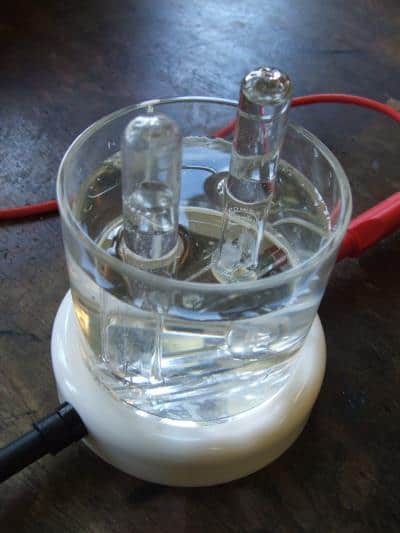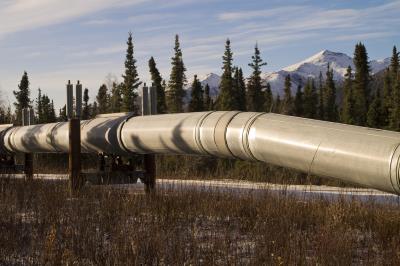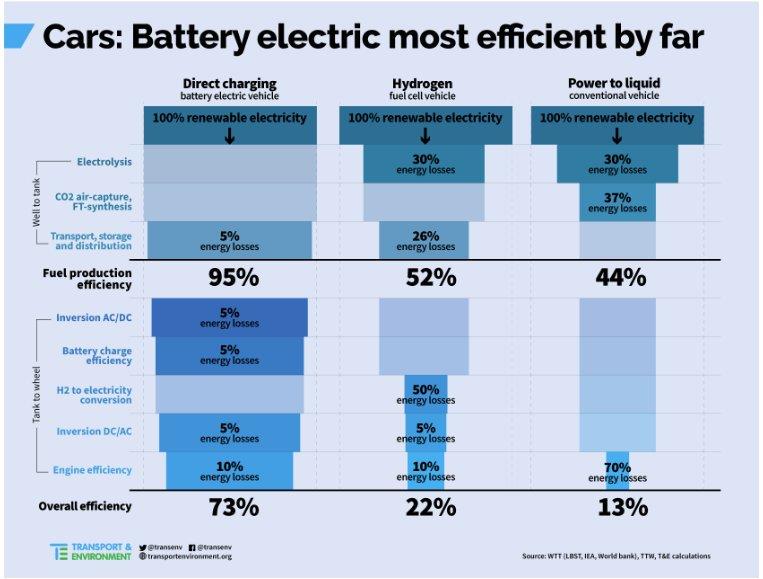Hydrogen cars (or fuel cell cars) work quite differently to electric cars. Whilst electric cars use electrical energy which has already been generated elsewhere (and stored away in the car’s the battery pack), hydrogen cars generate their own electrical energy from a hydrogen store (via fuel cells). Hence hydrogen fuel cells cars are in essence a hybrid car, but with fuel cells (converting hydrogen) instead of an internal combustion engine (converting gasoline).
Does this ‘hybrid’ style approach act as an advantage or disadvantage to hydrogen cars? Is the use of hydrogen as a fuel source (which can be highly flammable) a big flaw? We answer these questions and more in this pros and cons article.
10 Advantages

1. No harmful vehicle emissions
The process of the hydrogen car converting the hydrogen into electricity (via the fuel cells) produce zero harmful vehicle emissions; just water as a by-product. There’s relatively little water produced too, it’s not like roads would become flooded!
Due to this lack of greenhouse gas emissions when driving a hydrogen car, a substantial reduction in carbon emissions could be realised. In 2016, American vehicles produced 1.9 billion tones of carbon dioxide emissions – more CO2 emissions that factories in America produced then. So hydrogen cars could be beneficial in helping to turn the tide on such emissions.
2. Much better fuel efficiency/range
Hydrogen can be up to twice as efficient as gasoline: in other words, you could get up to double the mile/km range than in a traditional car. This is helped by the fact that hydrogen fuel cells are 40-60% efficient (when generating electricity), compared to internal combustion engines which are 30-35% efficient.
3. Re-fuelling time is much lower than electric cars
Re-fuelling a hydrogen car at a pump takes 5 minutes or less; much like re-fuelling with gasoline. This compares to electric cars which can take 6-8 hours for a level 2 charger (the most common type currently), down to 30 minutes for the very fastest (and rarer) level 3/4 charger.
Re-charge times for electric cars probably will fall, but almost certainly won’t be as quick as the 3-5 minutes of hydrogen.
4. Hydrogen fuel can be generated in eco-friendly way
As explored in our ‘Where does hydrogen fuel come from?’ article, whilst the most common way of producing hydrogen fuel right now isn’t very eco-friendly, there are a number of greener options available. The most commercially viable method is currently electrolysis:
an electrical current is passed through water, splitting the water molecules into hydrogen and oxygen. The electrolysis process itself produces no negative externalities, e.g. greenhouse gas emissions. But naturally the source of the electric might produce bad emissions: i.e. if produced by burning coal. However when the electric is produced through renewable energy sources (solar, wind, biomass etc), there are zero harmful global warming emissions. Electrolysis is a fairly light-weight process which wouldn’t require complex equipment, and thus more local generation is possible.
5. Much fewer chemicals at pump
When filling up a traditional car with gasoline at the pump, we come into very close contact with a range of harmful chemicals including:
- Benzene
- Toluene
- Ethylbenzene
- Xylene
These chemicals – dubbed BTEX – can potentially increase the risk of cancer and respiratory problems with repeated exposure. Indeed, two different research articles from Brazil have found some worrying health issues for gas station/gasoline production workers. One said the following of cancer risk:
The cancer risk is very high, because the values found are about 40 – 378 times above the acceptable limit and reinforce the need to adopt urgent measures to reduce or eliminate exposure of workers to the BTEX compounds.
The other research paper said the following about potential DNA damage:
16.6% of the studied population showed elevated frequencies of chromosomal abnormalities, which is highly likely to be correlated with their exposure to BTX during their work.
Re-fuelling with hydrogen at the pump is cleaner and requires far fewer chemicals.
6. Fits into current gasoline infrastructure

One of the potential issues with hydrogen is that it’s expensive to transport on the roads or sea. However transporting hydrogen via pipelines is possible, hence existing gasoline pipelines could be repurposed and used for hydrogen instead (if/when gasoline is used less, that is – right now it’s the main fuel source in the majority of countries).
Additionally, hydrogen can potentially be generated from sources such as biogas (also explained in the earlier article). And biogas is a common ‘waste product’ from industries such as waste-water plants. So potentially, this ‘waste product’ could be turned into one of the key components of a hydrogen fuelling pipeline.
7. Hydrogen fuel cells are durable
Fuel cells – the equivalent of the internal combustion engine of gasoline cars – seem fairly durable based on extensive testing with the Toyota Mirai. Overall Toyota has driven fuel-cell based vehicles over 1 million miles during their testing, and including various tests at high temperature areas (Death Valley, California), low temperatures (Yellowknife, Canada) and high and low altitude trips.
These tests were fine, and suggested that the fuel cell should be viable beyond the all-important 100,000 mile mark.
8. Cost falling consistently
Data from the Californian state said that the average price of hydrogen was $13.99/kg as of 2015, which should fall to $8-10/kg within the 2020-2025 period. At this cost, a gasoline powered car would cost $0.13 per mile to run, compared to $0.12 per mile with a hydrogen car (at $8/kg).
Additionally, the cost of hydrogen fuel cells are also falling. Their price per kWh has fallen by around 50% in the last decade, and look set to fall further.
9. Many safety measures in-place
Hydrogen cars are very safe, having been designed from the ground up to ensure that all aspects (especially the hydrogen storage tanks) are safe from leaks, piercing and general wear and tear.
Official tests (for example, from the Euro NCAP agency) have given the upcoming Hyundai Nexo full 5/5 stars for its safety, and Toyota have also ensured that their Mirai fuel-cell car is completely safe too.
10. Already proven
Hydrogen is already a proven fuel source, having been used by NASA since 1958 for various space trials and travels. Hydrogen being more than three times as powerful as gasoline (when burnt) is a big driver for this.
It’s therefore positive to know that hydrogen has driven various space tests forward and been central to their success, because it reinforces that it’s not some vague, experimental fuel source but something with defined successes over multiple decades.
11 Disadvantages
1. Price already lagging behind electric cars

The price to purchase/lease a hydrogen car is quite a bit higher than electric cars. For example, the Toyota Mirai is $57,500 to purchase, whereas a similar sedan-sized car might be around $25,000 as gasoline-fuelled and $35,000-$45,000 as pure-electric.
In addition, the cost per mile of an electric car can be as low as 3-4¢, compared to 25¢/mile for hydrogen cars currently, with this possibly dropping to 18¢ by 2020-2025.
Such significant price differences might be hard for hydrogen cars to overcome, especially when it’s predicted that electric cars might drop in price fairly substantially in the next few years. Can hydrogen cars ‘close the gap’, or will EVs simply beat them to the green car pedestal?
2. Few places to re-fuel currently
There are relatively few places to re-fuel currently, so much so that hydrogen cars are currently sold in restricted states/regions which have been known to have some hydrogen refueling stations (such as California, Germany and Japan).
The situation is improving though, with 64 new hydrogen public stations opened in 2017 (leading to over 300 Worldwide).
3. Currently more expensive fuel than gasoline
As seen in our eighth advantage, hydrogen is currently more expensive than gasoline – and it’s only in 2020-2025 that it might become cheaper than it, by a single cent per mile.
Whilst hydrogen could have some useful benefits to the energy sector, whether the slim financial benefit (compared to gasoline cars) will ever be worth switching to hydrogen cars is questionable.
4. Expensive to store & transport hydrogen
If hydrogen is produced at a central ‘power plant’ type site, it needs to be stored then transported to the various re-fuelling stations. This is not a cheap process: moving large amounts of hydrogen via the road or sea is much more expensive than moving gasoline around. Using pipelines would be a good option, but right now there’s only 1,600 miles (2,575 km) of hydrogen pipeline throughout America. This compares to 2,400,000 miles (aka 2.4 million) of gasoline pipelines.
So the general lack of infrastructure is a definite flaw with hydrogen currently.
5. Lots of greenhouse gas emissions (currently)

Whilst hydrogen can be generated in an eco-friendly way (advantage #4 above), the main method for producing it currently is known as steam methane reforming. And unfortunately, this process firstly emits carbon monoxide (an undesirable emission) and after further processing, carbon dioxide is emitted – aka the primary gas which causes climate change.
This process does result in 34-50% lower greenhouse gas emissions than the production of gasoline, but it’s still not as green as it could be.
6. Hard to fit into current infrastructure (right now)
The flip side of benefit #6 – which says that hydrogen can fit into the current gasoline-based infrastructure (such as pipelines) quite easily – is that this can only logically be done when gasoline is no longer used at a large scale!
After all, if all the gasoline pipelines were closed down and converted to hydrogen pipelines, right now most of the World would grind to a halt!
The alternative is to build lots of pipeline specifically for hydrogen, but this wouldn’t currently be a commercially sensible option.
7. Highly flammable
No matter how safe they make hydrogen fuel cell cars (and as we’ve seen from advantage #9, they are very safe!), hydrogen is fundamentally a risky gas: its chemical qualities mean that it’s susceptible to leaking, it’s ten-times more flammable than gasoline… and twenty-times as explosive!
This is partly why the cost of distributing hydrogen (as per disadvantage #4) on the road or sea is so expensive, and naturally producing hydrogen itself carries risk.
So whilst hydrogen is a good fuel due to it being quite explosive (after all, the more explosive ‘quality’ something has, the better the fuel!), it’s still a risky chemical element.
8. Hydrogen cars hard to acquire due to supply limits
Just like early electric cars, hydrogen cars are currently produced in very limited supply. Just 3,000 Toyota Mirai units were produced in 2017, which isn’t too bad… until you consider that this is probably the most widely available hydrogen car right now! The Hyundai ix35 fuel-cell model has had just 1,000 units produced in total, since its launch in 2013!
Whilst this will change as time goes on (aka as people move away from gasoline cars, towards greener alternatives), it still means that hydrogen cars are almost at the same infancy stage that EVs were 10 years ago.
9. Fuel cell cars relatively unproven
Whilst Toyota have tested their Mirai a lot as per advantage #7, due to the low numbers of hydrogen cars on the road right now, they’re still relatively unproven – especially compared to how proven gasoline cars obviously are.
So due to a lack of data, it’s hard to predict whether hydrogen cars will be viable over 100,000 miles or not. Toyota thinks that they will be and they have tested them up to 60,000 miles in just 5 months, but there’s always that chance that hydrogen cars will run up quite expensive maintenance bills toward the end of their life.
10. Fossil fuels needed to produce hydrogen fuel cells
Whilst hydrogen as a fuel can be produced in an eco-friendly way (but isn’t currently!), the production of the actual fuel cells that go into cars are not overly eco-friendly.
This is because petroleum-based products are used in the production of the fuel cells, leading to greenhouse gas emissions. Overall emissions would be less with hydrogen (compared to a gasoline car), but there is still a footprint.
11. Electric cars are more efficient overall
Whilst hydrogen cars can be more efficient than gasoline powered cars, they’re no match for the efficiency of electric cars. According to the UK’s Transport & Environment research group which says that efficiency along the entire ‘chain’ (generating usable power, then a car converting this into movement) is:
- Electric cars: 73% efficient
- Hydrogen fuel cell cars: 22% efficient
- Gasoline cars: 13% efficient
This is based on the idea that generating electricity itself is more efficient than the processes for hydrogen or gasoline generation (and transport). And then a purely-electric car has higher efficiency between its battery pack, electric motor and drivetrain than hydrogen and gasoline cars have between their power plant and drivetrain:

3 comments
Thanks – I look forward to future comments.
How many hydrogen fuelling depots are there in the England?
Hello, unfortunately I haven’t seen an accurate England or UK wide source for hydrogen depots. I’d say that it’s over 100 now (especially since there’s various hydrogen fuelling stages for busses now), but right now all we have is promises that there’ll be 2,000+ by the end of the decade: https://www.h2-view.com/story/40-waste-to-hydrogen-refuelling-stations-planned-for-the-uk/
One of the biggest hurdles for both EV & Fuel Cell vehicles is operation in extremely cold climates. Much of North America is extremely cold in the winter. Batteries lose a good amount of power in low temperatures and How do these vehicles heat the cabin? Electric heat requires considerable amperage, further degrading battery capacity & performance. Aren’t hybrid vehicles a better answer when considered their use across all seasons, especially in cold winter areas?